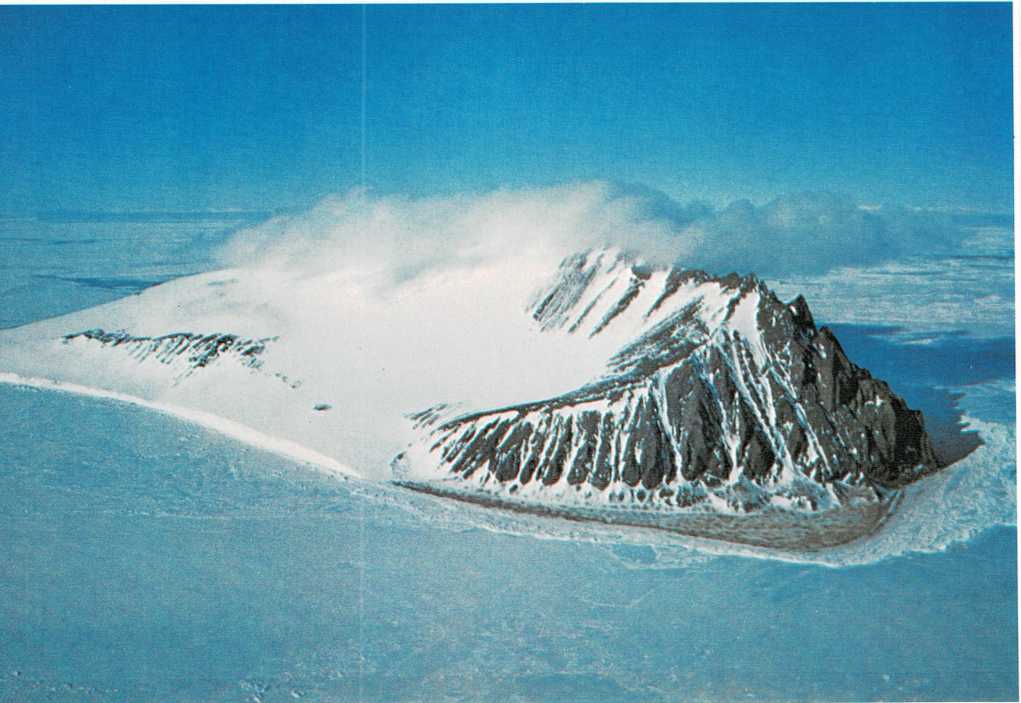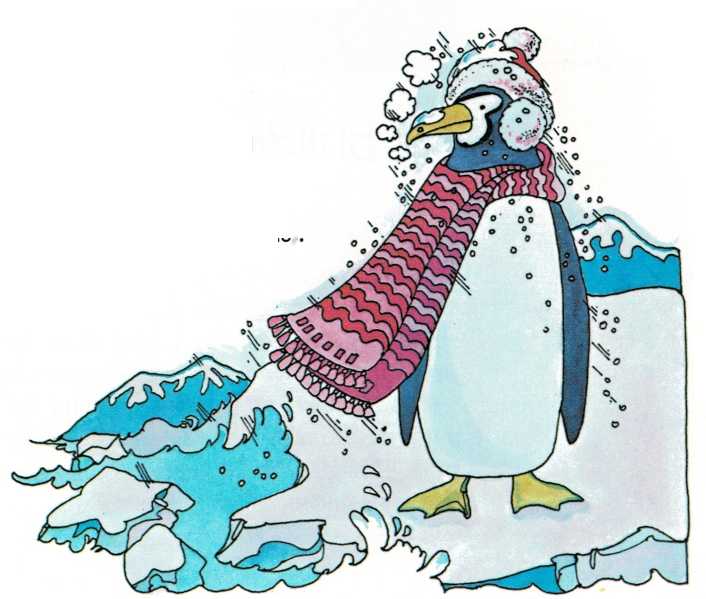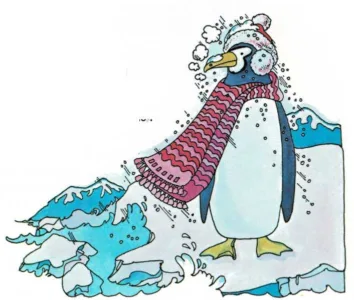Lands of ice
Two parts of the earth are bitter cold all year round. These places are
the “top” and the “bottom” of the earth—the North Pole and South Pole.
The land around the South Pole is called Antarctica. It is the coldest
place on earth. Antarctica is covered with a sheet of ice more than a
mile (1.6 kilometers) thick. But beneath the ice there is land, just
like other land, with mountains, plains, and valleys.
At the North Pole there is no land. This part of the world is just a
huge sheet of ice from four to ten feet (1.2 to 3 meters) thick. Beneath
the ice there is only the water of the Arctic Ocean.
Beaufort Island, Antarctica

Scientists know that ten or twenty million years ago there was no ice at
the North and South poles! Palm trees grew in Antarctica, and animals
such as those that now live only in hot places lived there! But
something happened to turn the two poles into regions of ice.
We don’t know why the poles became covered with ice, but we know why the
ice does not melt. It is because the sun never shines directly down on
the poles. Because the sun is usually low in the sky, the air stays
cool. Thus, the poles get much less heat than the rest of the earth. And
most of the heat they do get bounces off the shiny, white ice and is
reflected back out into space. So the poles never get enough heat to
melt all the snow and ice.
It’s a Fact
127 degrees below zero, Fahrenheit (—88° Celsius)

The lowest temperature of anyplace in the world was recorded in
Antarctica—

